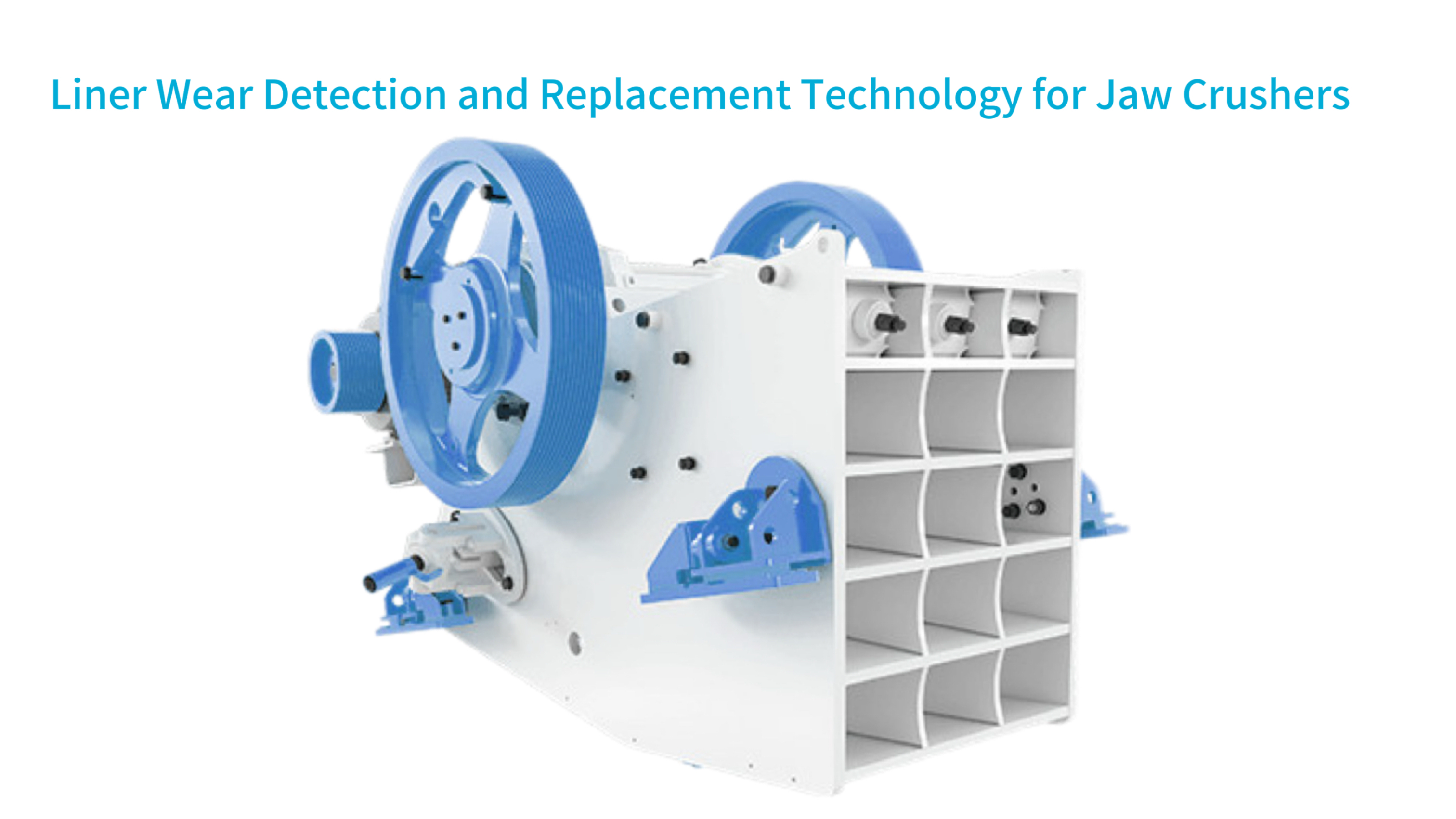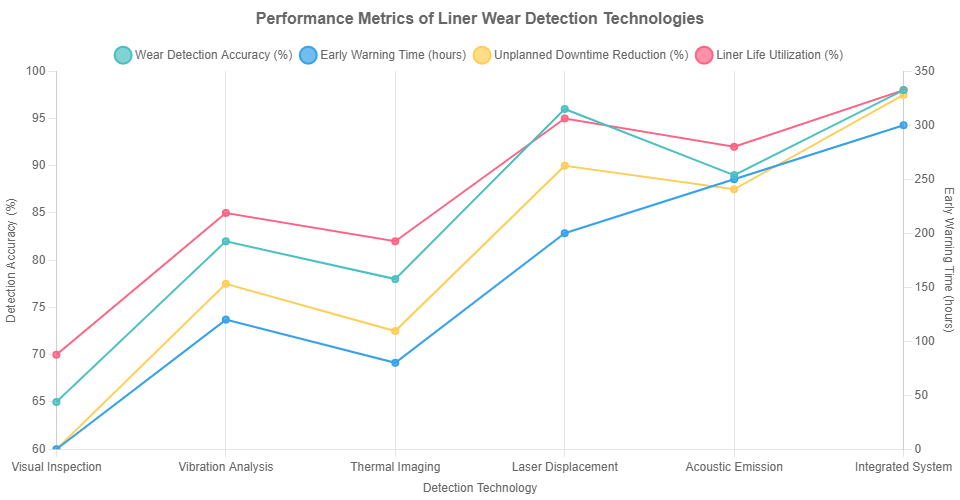Liner Wear Detection and Replacement Technology for Jaw Crushers

This article provides an in-depth analysis of wear detection technologies and automated replacement systems for jaw crusher liners. It covers core aspects such as sensor application, data analysis, and mechanical design, offering enterprises a precise and actionable maintenance strategy to maximize equipment uptime and productivity.
Technical Principles of Liner Wear Detection and Sensor Applications
Monitoring the wear of jaw crusher liners is critical for maintaining optimal crushing efficiency and preventing catastrophic damage to the crusher's main body. As liners wear, the crusher's performance gradually declines, leading to increased energy consumption and potential product size inconsistencies. Modern detection moves beyond simple visual inspections to sophisticated, sensor-based systems that provide real-time data on liner condition.
These systems employ a variety of non-contact and embedded sensing technologies to measure different aspects of wear. Each technology targets a specific failure mode, from general thickness reduction to localized cracking and abnormal thermal events. By integrating data from multiple sensors, plant operators can gain a comprehensive understanding of liner health without needing to stop the machine for manual inspection, thus transitioning from reactive to predictive maintenance.

Vibration Analysis for Pattern Recognition
Vibration analysis is a powerful tool for detecting changes in the crusher's operational signature. As the liner wears, particularly at the edges, the dynamics of the crushing process change. These changes manifest as alterations in the vibration frequency spectrum. Accelerometers mounted on the crusher's frame can detect these subtle shifts, often within a specific frequency band of 100 to 500 Hertz, which is indicative of impacting and grinding motions.
By establishing a baseline vibration profile for a new set of liners, the system can continuously monitor for deviations. An increasing amplitude or a shift in dominant frequencies can signal that the liners have worn to a point where replacement should be scheduled. This method is highly effective because it uses the crusher itself as a sensor, requiring no modifications to the liners and providing continuous, real-time monitoring.
Thermal Imaging for Overload and Friction Detection
Thermal imaging cameras offer a unique view into the crushing process by detecting heat generated by friction and impact. During normal operation, the crushing chamber exhibits a predictable temperature distribution. However, abnormal conditions, such as a loose liner, inadequate material feed, or the presence of uncrushable material, can create localized hot spots that are invisible to the naked eye.
High-resolution thermal cameras with a sensitivity of ±0.1°C can identify these anomalies from a safe distance. A sudden temperature spike in a specific area of the crushing chamber can trigger an immediate alarm, allowing operators to intervene before the situation causes significant damage to the liner or the crusher structure itself. This technology is especially useful for protecting the main frame and other costly components.
Laser Displacement for Precise Thickness Measurement
For direct measurement of liner wear, laser displacement sensors provide unparalleled accuracy. These sensors are typically mounted in a protected location near the crusher's opening, where they can periodically scan the surface of the liner. By measuring the time-of-flight or phase shift of the reflected laser light, they can calculate the distance to the liner with a precision of up to 0.01 millimeters.
By taking repeated measurements over time, the system can build a detailed wear profile of the liner. This data is crucial for predicting the remaining useful life of the liner and scheduling its replacement during a planned maintenance shutdown, thereby avoiding unplanned downtime. This precise measurement is as important for jaw crushers as the precise geometry of the concave is for cone crushers.
Acoustic Emission for Early Crack Detection
Acoustic emission (AE) technology listens for the high-frequency stress waves generated by the rapid release of energy within a material, such as the propagation of a micro-crack in a liner. AE sensors are highly sensitive and can detect these signals even amidst the loud background noise of a operating crusher, thanks to advanced signal processing algorithms that filter out irrelevant noise.
The system analyzes the rate, intensity, and location of these acoustic events. A sudden increase in acoustic activity can serve as an early warning that a liner is developing cracks or that a existing crack is growing, long before it becomes a critical failure. This allows for planned intervention, preventing a liner from breaking apart and causing extensive damage to the crusher's interior, similar to how monitoring protects a rotor in a VSI crusher.
Design and Control Logic of Online Replacement Systems
The ultimate evolution in crusher maintenance is the development of fully automated or semi-automated liner replacement systems. These systems are designed to perform the dangerous and time-consuming task of changing out worn liners with minimal human intervention. The primary goals are to drastically reduce downtime, enhance worker safety, and ensure that liners are installed with perfect alignment and torque.
An online replacement system is a complex integration of heavy-duty robotics, precision hydraulics, and sophisticated control software. It must interface seamlessly with the crusher's own control system and execute a precise sequence of operations, from loosening and removing massive worn liners to positioning and fastening new ones. The reliability of this system is paramount, as any failure during the process could lead to significant delays.
Robotic Arm Precision and Positioning
The heart of an automated replacement system is a powerful, multi-axis robotic arm equipped with specialized tooling, often a magnetic or hydraulic gripper, designed to securely handle heavy liner plates. The arm's movement must be incredibly precise, with a positioning accuracy of at least ±0.5 millimeters, to correctly engage with the liner's lifting points and avoid damaging the crusher's mounting surfaces.
The arm's path is guided by a digital twin or a precise 3D map of the crusher chamber. This allows the control system to calculate the exact trajectory needed to extract the old liner and insert the new one without collisions. The high precision required is comparable to that needed for assembling other complex components like a main shaft assembly.
High-Speed Hydraulic Drive System
Speed is a critical factor in minimizing crusher downtime. The replacement system is driven by a high-performance hydraulic system capable of delivering the immense force needed to break liners free from their seated position, while also allowing for smooth and controlled fine movements during positioning. The valves and actuators in this system must have a very fast response time.
The entire replacement cycle, from the moment the crusher is stopped and locked out to the moment it is ready to restart, is designed to be completed in less than 10 minutes for a single liner. This is a dramatic improvement over manual methods, which can take hours. The hydraulic system's reliability is ensured through the same rigorous maintenance practices applied to the crusher's own hydraulic functions.
PLC Control and System Integration
A dedicated Programmable Logic Controller (PLC) acts as the brain of the replacement system. It executes the pre-programmed sequence of operations for the robotic arm, hydraulic tools, and safety devices. This PLC communicates directly with the crusher's main control system using a robust industrial communication protocol like Modbus TCP/IP.
This integration allows for a seamless workflow. The crusher's PLC can send a "liner worn" signal to the replacement system's PLC, which can then schedule the change-out. Conversely, the replacement system must send a "task complete" and "all clear" signal before the crusher's PLC will allow the machine to be restarted, ensuring absolute safety.
Safety Interlocks and Emergency Systems
Safety is the highest priority in any automated system handling heavy loads. A multi-layered safety system is implemented to protect personnel and equipment. This includes physical barriers, safety light curtains that immediately halt all movement if breached, and emergency stop buttons placed at strategic locations.
The control system is designed with redundant safety relays that monitor the position of the robotic arm and the status of all tools. If any parameter falls outside its safe window, the system will initiate a controlled stop or activate emergency brakes. This comprehensive safety approach is essential for operating complex machinery, much like the systems in place for a tracked mobile crusher.